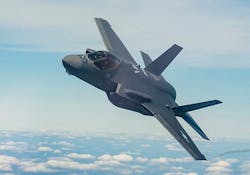F-35 is about to get a lot smarter, using artificial intelligence to compile mission data files
REDWOOD CITY, Calif. – War in the 21st century runs on data, a lot of it in the case of the F-35 Joint Strike Fighter. The mission data files that inform F-35 deployments and missions can take as long as 18 months to compile, bringing in information on everything from enemy radar and anti-aircraft missiles to waveforms and cyber weapons. Defense One reports. Continue reading original article
The Military & Aerospace Electronics take:
10 Dec. 2018 -- Now the Pentagon has hired a California company to shrink that compilation time to just one month, using artificial intelligence.
The company, C3 in Redwood City, Calif., sees itself as a sort of AI tailor, stitching together different methodologies — from simple machine learning to more sophisticated deep learning—and combining heterogeneous forms of data that don’t play well together—from images to diagnostic valuations to text—into products that are specific to the problem.
Some might be heavier on deep learning, some on machine, in which case the company works to accelerate the laborious task of data labeling. They’ve been quietly doing business with the Defense Department for 15 months, after an initial outreach from the Defense Innovation Unit.
Already they’re involved in nine projects, mostly related to predictive maintenance for aircraft such as the E-3 Sentry AWACS, the C-5 Galaxy, the F-16, and soon, the F-35, predicting when a part or computer system might fail on the basis of weather, deployment, mission, the age and condition of its components, and so forth.
Related: Air Force Chief Scientist: F-35, F-22 to get artificial intelligence and control drones
Related: Air Force chief scientist confirms F-35 will include artificial intelligence
Related: Lockheed Martin pitching U.S. Air Force on F-22-F-35 hybrid fighter intended for Japan
John Keller, chief editor
Military & Aerospace Electronics
Ready to make a purchase? Search the Military & Aerospace Electronics Buyer's Guide for companies, new products, press releases, and videos

